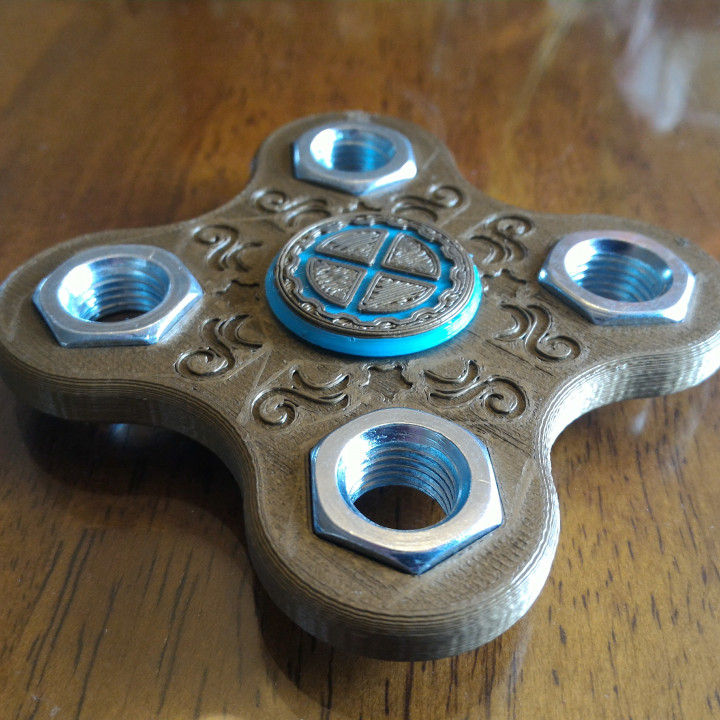
Steampunk fidget spinner
myminifactory
An Exercise in Fun I've been designing spinners for my kids, and it's been an absolute blast. I enjoy exercising my creative side and seeing the joy on their faces when they play with theirs. After watching them have a great time with theirs for a while, I caught the bug - I wanted one too! Initially, I designed a simple 4-nut spinner in translucent red filament (one of my favorite spools). Then, for my anniversary, my wife surprised me with some FoxSmart bronze filament! The idea of a bronze spinner immediately popped into my head. I thought to myself, "How can I logically combine the bronze with a hand spinner?" I knew exactly what I had to do... Steampunk! In the right context, I really enjoy steampunk style. It's that mix of Victorian or Art Nouveau with elements of the industrial/steam age that's a rather cool intersection of fantasy. It romanticizes key points in history and adds a "what if?" analysis of where "steam" energy might have taken us. The style has been generalized to include clockwork mechanisms with chunky gears, but I think this fits more into the latter category. While some steam power could really spin one of these fast, I wouldn't recommend it on a PLA or other plastic creation. Not only could it melt your cool creation, it's just not smart. Before getting into trapped penny spinners, I thought the idea of a nut spinner might be a good one. Nuts are far cheaper than bearings, especially if you get plain old zinc-coated nuts. The nuts in this case are about 17.2mm in diameter, edge to edge (the diameter of the circle that inscribes the nut). They give some heft without costing much. The neat thing is they kind of fit with the whole steampunk theme. My nuts, according to my records, are 7/16" GR5 hex nuts from Home Depot and cost $0.17 each. An advantage of nuts over pennies is that it's generally easier to create a balanced spinner using nuts rather than pennies due to the difference in makeup of the pennies over the years. Tight fit! I have my printer tuned in fairly well. The tolerance on the center bearing is only 0.1mm for the radius (0.2mm for the diameter). I have to tap my bearings in using a flat block of wood and a hammer, but once they're in, they tend not to come out. Given the variance of printers, I can't guarantee your printer will yield the same results as mine. Your bearing might be too loose. Mine is snug. You might need to play with your scaling factors should things not work the way you expect. One of my nuts was just a little bit tight, causing the spinner to crack. I used some spare filament and a rotary tool to "weld" it shut, but it did result in a little bit of a scar. DISCLAIMER You know the drill. You're printing something on your printer. You're responsible for what you print. Don't give spinners to kids, adults or pets who have a tendency to pull apart things and place them in your mouth. Several components of a spinner would be rather nasty to your health should one try to ingest them. Don't throw a spinner at someone - it hurts. Use common sense. Be responsible. Have fun! Like what I do and want to support me? Please consider leaving a tip. Want to support me and get great filament at the same time? Please consider using my Proto-pasta affiliate link!
With this file you will be able to print Steampunk fidget spinner with your 3D printer. Click on the button and save the file on your computer to work, edit or customize your design. You can also find more 3D designs for printers on Steampunk fidget spinner.
